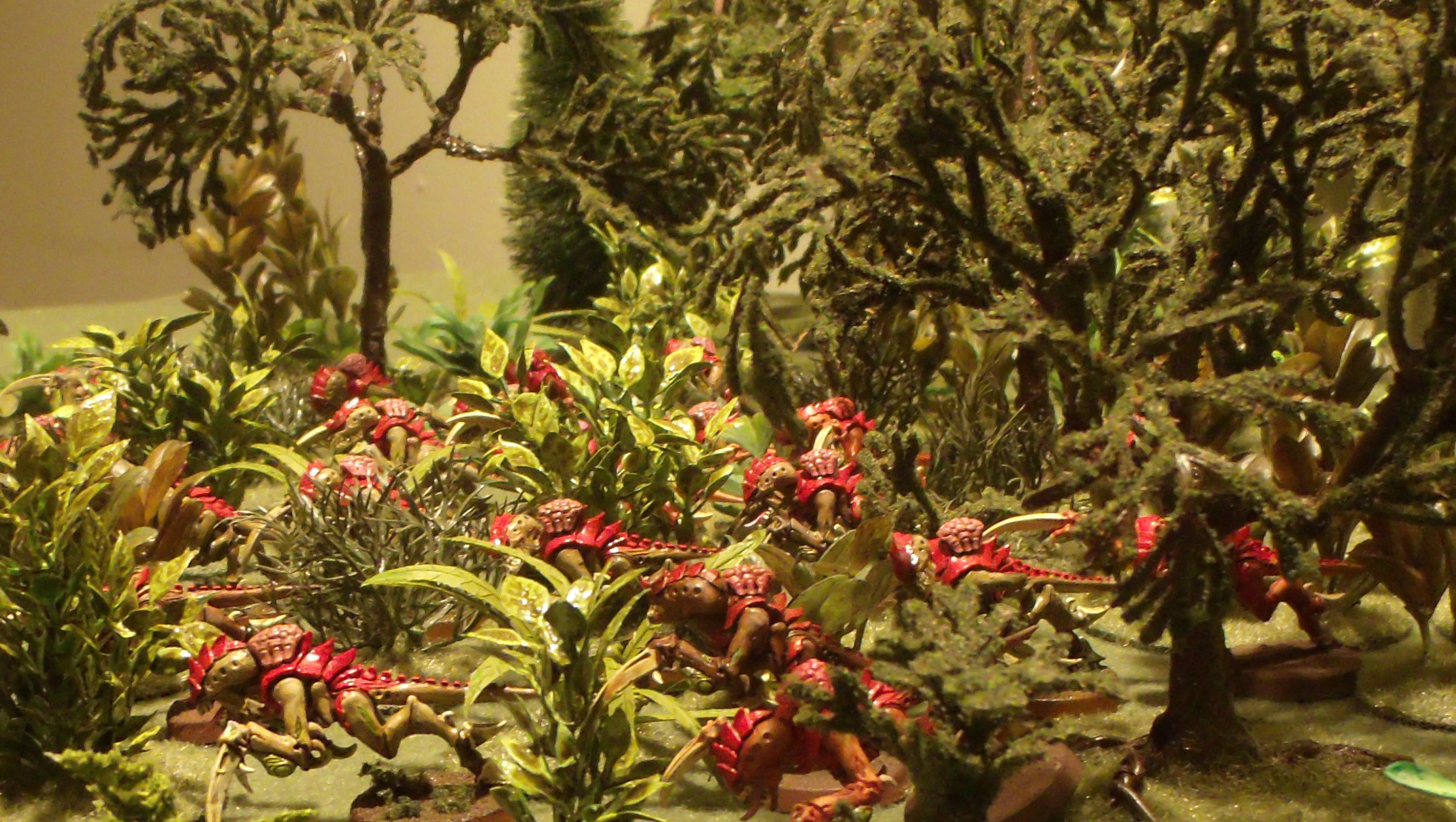
Plastic plants come in many different sizes, shapes and colors, and are an excellent resource to use when making gaming terrain. They are very commonly used in aquariums, flower arrangements, and holiday decorations, just to name a few sources. If used properly they can make very convincing looking gaming scenery. However, there are a few things that you should know before you start making terrain with them.
We get a lot of comments from people on our plants and they frequently go something like, “Wow that’s really cool! How did you do that?” Usually this comes from someone who has a beautifully converted and painted army. I personally find this amusing since converting a miniature is much harder than converting a plant. Creating a plant is, in a lot of ways, like converting a miniature. You can cut parts off of one plant and combine them with pieces from another to create something uniquely your own. We have a “bits box” full of plant pieces that can be used whenever needed. The point is that if you look at crafting plants the same way that you look at converting miniatures then you will be surprised at how easy it is. Hopefully, you will find some of these techniques useful when converting your own plants.
The most basic thing you should realize is how you choose to make use of your scavenged plants can make a huge difference in how the end results appear. In this first example we have used some clippings from one single plant to make several different looking plants. Even without changing the color or texture of the plants we have made some very different looking plants. A very nice plant that is badly presented will look bad, but a well presented ugly plant can actually look very good. Some of these techniques work well with some plants than others; you may have to do some experimenting to determine what works with the plants that you have.

Our first example in the picture above is what we’ll call a “blanket placement” It works well when your plants are basically two dimensional and you need a lot of them to look like a real plant. However, it is generally only good for making very low plants. The second is “dispersed placement” and it works well when the leaves are big or you just need a more open plant. The third one is a “closely grouped placement” and it’s good one to use when there are few or very small leaves. The last one is a “radial placement” and is good for larger plants like trees, or when the leaves are the only usable part of the plant.

When selecting plants to use, anything with small enough leaves will work. Don’t necessarily select them based on color and texture since this is actually the easiest characteristic to change. If your plants don’t look realistic, then fix them by painting or flocking them whenever necessary. We like to use the plants we find at craft stores since they are usually really cheap, but have the drawback of looking cheap without touch-ups. Aquarium plants are also excellent to use, but are usually a bit more expensive.

The biggest mistake that some people make is not bothering to paint the plants. Plastic plants are frequently made of a very shiny soft plastic that most paints won’t stick to very well. However several major paint manufactures now make a spray paint specially formulated to bond to this type of plastic. If you use one of these fusion types of paint as a primer then you shouldn’t have any problems painting them with your regular paint. This type of paint can be found in the hardware section of many stores, and is frequently marketed as being for use on plastic outdoor furniture. Look for the words “bonds to plastic” or something similar on the label, and you’ll be colorizing your craft store plants in no time!

Some plants won’t look good even when painted because the scale of the leaves is just too big, flocking them can frequently change that. Make sure that you consider this when selecting your plants because a flocked leaf looks very different from a painted leaf. This comparison picture does a good job of showing how important the flock you use is in the appearance of the plant. The same plant looks very different when it’s not flocked verses if it’s finely flocked or coarsely flocked. Depending on the plant, you can vary the look even more by flocking only specific parts.
As a final note; we like to make our plants in at least three different sizes, and we like to make lots of the little ones. A small plant doesn’t tend to get in the way when playing a game, yet still adds a lot to the game visually. A real forest has plants in all stages of the life cycle, so having your plants in several different sizes is crucial to making it look realistic. You can read up more on the importance of size here.








[…] Working With Plastic Plants (part one) […]